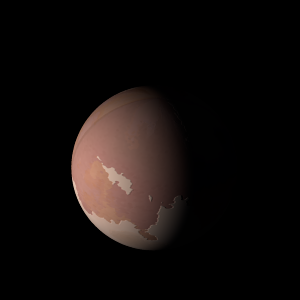|
|
Space Astro
|
Info for exoplanet "Nusfer"
| Scientific (actual) data |
|---|
| Name | K2-270 c |
| Planet status | Confirmed |
| Radius | 0.263 |
| Orbital period | 4.40003 |
| Semi major axis | 0.0497 |
| Discovered | 2018 |
| Updated | 2021-02-05 |
| Tconj | 2457140 |
| Impact parameter | 0.38 |
| Temperature (kelvin) | 848 |
| Publication | Published in a refereed paper |
| Detection type | Primary Transit |
| Alternate names | 2MASS J08450398+1332594 c, EPIC 211529065 c, EPIC 211529065.01, WISE J084503.97+133259.2 c |
| Star name | K2-270 |
| Right ascension | 131.27° |
| Declination | 13.55° |
| Mag j | 11.968 |
| Mag h | 11.462 |
| Star distance | 283.53 |
| Star metallicity | 0.26 |
| Star mass | 0.85 |
| Star radius | 0.77 |
| Star temperature | 4877 |
| Star alternate names | 2MASS J08450398+1332594, EPIC 211529065, WISE J084503.97+133259.2 |
| Wikipedia article | K2-270 c |
Back
| |
| Fictional info (?) |
|---|
| Suggested name | Nusfer |
| Planet type | Hot planet |
|
| Atmosphere | Carbon dioxide | 56% |
| Neon | 43% |
| Formaldehyde | 0.34% |
| Atmospheric pressure | 40 bar |
 |
| No known satellites |
| Google search for Nusfer |
|
Website by Joachim Michaelis
|
|
|
|